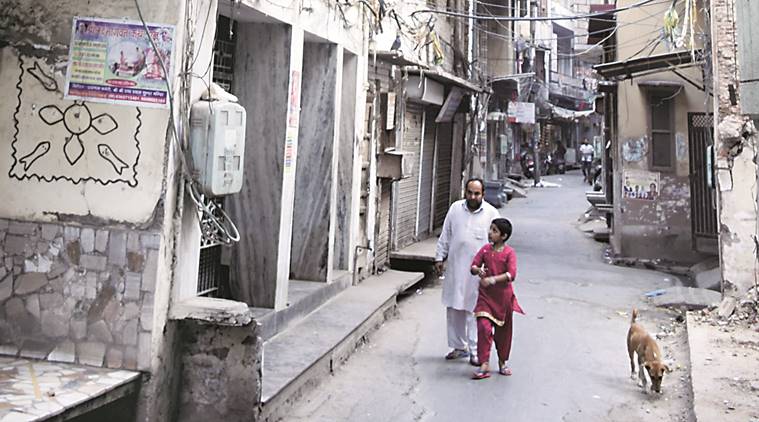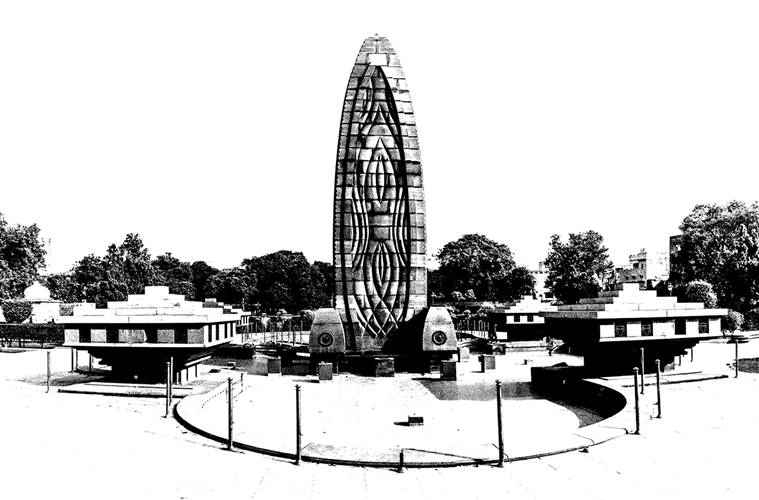
Hundred years is a long time in a nation’s history. Regimes take shape and fall. Memories, however deep etched in the psyche, start to fade away – something that’s happening to the Crawling Street of Amritsar.
The 180-metre stretch of narrow road lies forgotten today with even some people living on its periphery not knowing about the lane, or how it got its name, or how it shaped history of Punjab and India.
Sample this:
Kesar Da Dhaba, one of the most famous food joints in Amritsar, sees hundreds of locals tourists visiting it every day. Few metres from this Dhaba is an old well, known as Korian Wala Khu (whipping well). The well marked the starting point of the Crawling Street.
The well and street got their names from the punishment that the British handed over to the locals, who failed to follow their orders.
On April 10, 1919 Marcella Sherwood, a missionary, was cycling down the street when she was allegedly attacked. Some locals intervened and saved her.
Three days later, on April 13, 1919, Brigadier General Reginald Dyer ordered his troops to fire at a crowd of more than 20,000 people who had gathered at Jallianwala Bagh on Baisakhi day. The exits were blocked and the firing continued for about 10 minutes. As bullets rained, many jumped into a well, others were crushed in a stampede that ensued. The officials later put the death toll at 379.
Following the incident, curfew was imposed in the area.
Six days after the massacre, Dyer, who had by then gained notoriety as Butcher of Amritsar, was informed how Sherwood was attacked. He issued an order that no one would walk through the street where Sherwood was attacked. Those (the locals) who needed to pass through it, were told to crawl.

British soldiers were directed to whip those who failed to follow the orders. The whipping was carried out at the well, that was later known as Korian Wala Khu.
A hundred years, it is difficult for most people visiting Kesar Da Dhaba to find either the Crawling Street or the Korian Wala Khu.
Fifty-year-old Ram Prakash has ferried tourists and locals from Golden Temple to Kesar Da Dhaba in his rickshaw everyday for last 10 years. He has never heard about the Crawling Street.
“I haven’t heard about any such street. Even the tourists or locals have never asked me about any such street are told me to take them there. Does any such street really exists, he asked.
Kesar Da Dhaba was established in 1916, three years before Jallianwala Bagh happened.
“No, I don’t remember anybody ever asking me about Crawling Street,” said Ramesh, the fourth generation of owners of Kesar Da Dhaba.
Locals, around 35 years ago, had constructed a temple over the well. It is no more visible and only locals who lived nearby know that such a well existed there.
“Kesar Da Dhaba is just metres away. But if you ask anyone about the Crawling Street, you will probably get answer in negative. Even the current generation living there does not know about the history of the street. It is just another Amritsar street for most of them. They may have read about it in school books but don’t know that it exists right here,” said 70-year-old Madan Lal Vij, who has his ancestral house on the Crawling Street.
He said, “My father had witnessed that episode. He had told me all about it. Most people then didn;t even know about the order issued by the British.
So when they reached the street, the British soldiers would ask them to cross it by crawling. Those who failed to do so would be tied near the well and whipped”.
He said that most of the families that used to reside there have moved out of the old city walled city. “The families, now living here, came only after 1980. Most of them don’t know about this street’s history. We urged several leaders to do something to tell the people about the history of this street, but nothing has been done”.
Former minister Darbari Lal too said that “almost no effort” has been made to preserve the history related to Jallianwala Bagh. “I have met people who were witness to the history of the Crawling Street and the Jallianwala Bagh. This street could have been made part of heritage walk…”
As people discuss what could have been done or should have been done, a part of history, a very painful and shameful part, fades away.